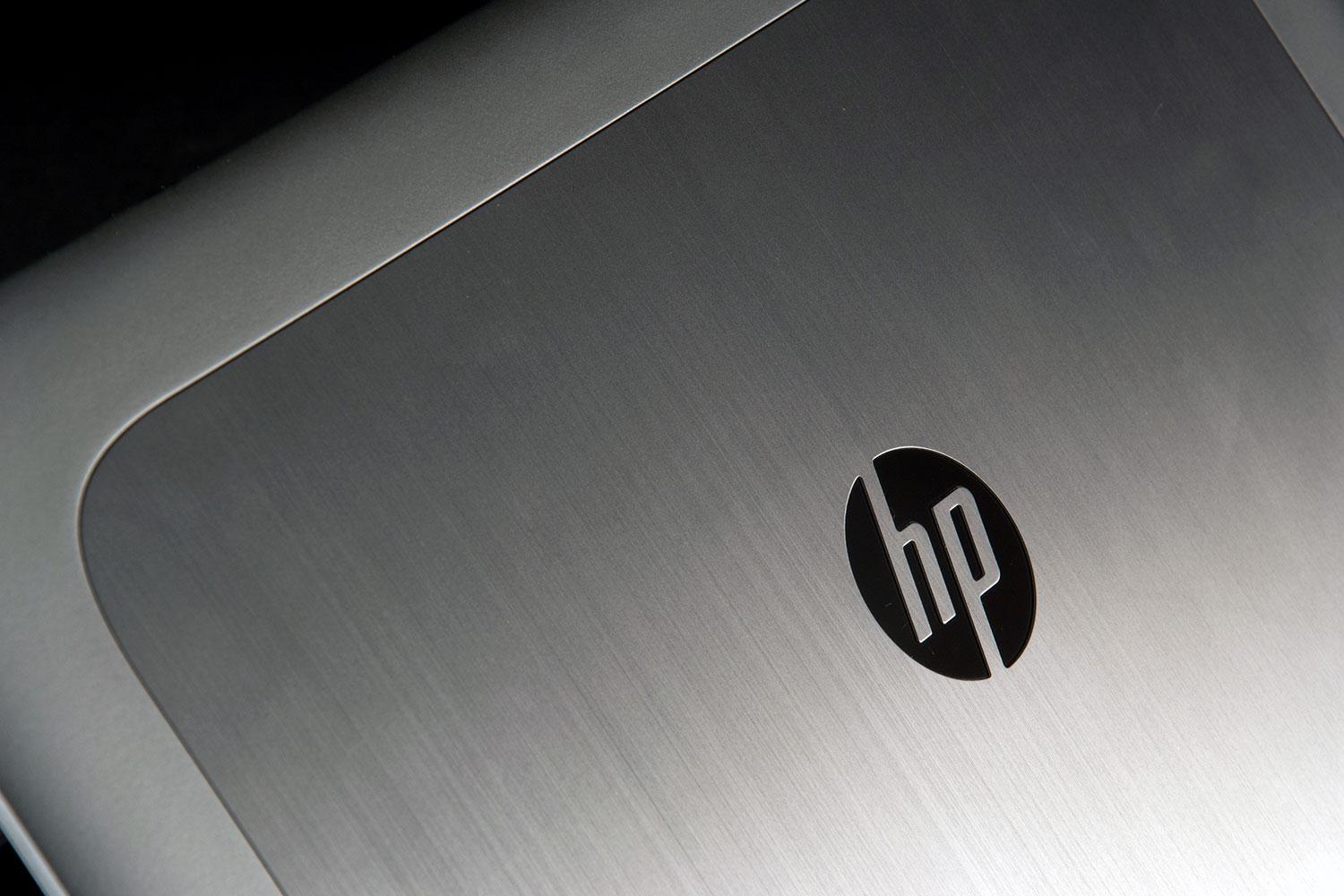
EB: It is the one-year anniversary of the HP Inc – Hewlett Packard Enterprise split. How have you found the first year of business as HP Inc.?
NL: Simply incredible. A year ago, we set out to reinvent everything – our industry, our company, our products and services, our culture, and ourselves. In that time we’ve come such a long way, and forged a very firm foundation for our future.

This year was also my first year as President for EMEA [Europe, Middle East and Africa]. Taking the helm of EMEA’s largest start-up has been hugely exciting, and a privilege. The journey we have been on has been extremely rewarding, and we are just getting started.
From major product and service innovations to strategic acquisitions, we’ve achieved a phenomenal amount in such a short space of time. And we’ve done all this in a time of market softness and rapid change.
But our biggest achievement has been building such a strong team. Across the region we’ve harnessed the energy of the new HP – everywhere I look, I see a team that’s motivated and invested in the company’s success.
EB: The market continues to struggle amid weak PC and printer demand. Faced with a declining market, a market which has traditionally sat at the core of your business, what’s your strategy for growth moving forward?
NL: HP’s strategy is to be selective in where we play; that means remaining strong in our core, seeking relevant growth opportunities, and delivering customer and partner value-add at every chance we get.
In the past 12 months we have also announced a host of incredible category and product innovations, including the thinnest consumer and business laptops in the world, our high-spec Omen range for serious gamers, and the revolutionary HP Elite X3 – the first phablet, laptop, and desktop in three-in-one, a new standard for mobile working.
2016 was also the year we introduced the world’s first production-ready 3D printer system, with output that is ten times faster than competitor models at half the cost. Finally, we announced the acquisition of Samsung’s printer business. Combined with our own technology, this will deliver our customers and partners true innovation and a winning proposition in the global $55 billion A3 copier segment.
Separation was a catalyst for 12 months of endless innovation. We have a newfound independence that’s driving more focused R&D, and allowing us to invest in customer-relevant new technology.
EB: What about your plans for HP specifically in EMEA?
NL: Our global and EMEA strategy has not changed in the last few years. Tactics and executional focus change when needed, but we don’t believe in changing a winning strategy. Delivering technology that makes life better for everyone, everywhere is our goal.
EMEA will continue to play a lead role in product and service introductions. Many innovations that are changing our industry were launched here in 2016: our Jet Fusion 3D printer and HP Elite X3 in Barcelona, HP Spectre in Versailles, and our HP Slice and Pavilion Wave desktops in Berlin, to name just a few.
We’ll also continue to reinvent our relationship with the channel. Among other things, you’ll see us focus even more on our services and solutions offerings. In EMEA we’ve made great progress in these areas, and in October, HP Inc. ranked first for Channel Satisfaction amongst all vendors, according to the Canalys Vendor Benchmark.
We have an ongoing commitment to our customers and our brand in EMEA; these are two things very hard to separate when you have been in this industry for over 75 years. You’ll see HP’s logo on the Renault e.dams Formula E team, the electric-only motorsport. You’ll also see it at the Cannes Film Festival, where we help deliver much of the buzz and excitement, not just for the duration of the festival, but behind the scenes every day as a core provider of technology to movie and design houses.
Beyond that, we’re more focused than ever on our core business. Something we’re currently proud of is our share in the PC market in EMEA – the highest we have ever had. Rather than a goal in itself, we see this as a reward from our customers who value the brand and the innovations we bring to market. Our goal is not share for share’s sake, it is to continue creating satisfied customers.
EB: You have made a grab for an even bigger share of the printing market with the acquisition of Samsung’s printer business – the biggest acquisition made by either companies since the split. What are your plans for the copier space?
NL: HP didn’t just acquire Samsung’s Printer Division; it set out to disrupt an outdated copier market with superior multifunction printing technologies. The acquisition shows our commitment to reinventing the A3 copier space, a $55 billion market. By combining Samsung A3 technology with HP printing technologies, we’re creating a powerful portfolio of superior and secure A3 multifunction printers in a part of the market that has not seen innovation for a long time.
For channel partners, this launch represents the industry’s most advanced lineup of A3 laser, MFPs and A4 laser printing solutions for the office.
And we won’t stop there. We’re planning to continue transforming the market, both in the short and long-term future. Watch this space!
HP is also pushing big on 3D printing – continue reading to see how HP Inc is planning to grab the market
EB: The copier industry is not the only market HP looks set to disrupt – you are also driving 3D printing. Why the focus on 3D printing and how is HP currently disrupting markets like manufacturing?
NL: You’re right, 3D printing is a big focus for us, and we have already delivered our first HP Jet Fusion 3D printer to our first customer! The industry is at a tipping point. It’s become a world-changing technology and is in the early stages of disrupting entire markets, and their manufacturing and supply chains.
3D printing enables companies be much more efficient with their materials, and view their manufacturing strategy, supply chain and product design through a new lens. It removes the need to hold onto large parts inventories and reduces supply chain complexity, as spares can be created on-demand, on-site, as needed. It also makes maintenance and repair business models more financially viable – that encourages companies to build things to last once again, as products can be efficiently fixed, upgraded, and maintained. A definite bonus for consumers!
Taking all of this into account, there’s a huge appetite for growth in this market. I believe we have a strong opportunity to lead the charge on this growth potential and recast manufacturing with 3D printing.
EB: What do you think of the prospects of 3D printing for consumers? I can see the application wide-scale adoption of 3D printing in manufacturing, but will that same adoption be seen among consumers?
NL: Our HP Multi Jet Fusion 3D technology is aimed at manufacturing companies, medium and large in-house model shops, and service bureaus. We are providing end-to-end solutions to enterprise clients, while providing consumers with affordable access to our solutions. Our 3D technology is designed to enable individuals, entrepreneurs, and specialty consumer goods providers to reach new markets and expand possibilities in their sectors, and to also provide unique opportunities for the general public to access top-quality 3D printed products and services.
EB: How do you want HP to be seen in the 3D printing space, say, in five years’ time? What are your ambitions for this segment?
NL: Our aspirations extend well beyond our own market leadership position in the commercial 3D printing business domination, and well beyond 5 years’ time! We want to reinvent the manufacturing sector through wide-scale adoption of 3D printers. To achieve this, we need to ensure manufacturers understand the impact 3D printing can have on the supply chain and product design, and educate and inspire the next generation of designers and engineers.
EB: HP has a future mission to create a ‘blended reality’ – what does this future mission entail, where is HP in regards to this journey, and what technologies and innovations are being used/deployed?
NL: The 2D world of conventional computing and printing is converging with the 3D world of immersive computing and instant custom manufacturing.
The intersection of those worlds – the physical and the virtual, atoms and bits – is what we call Blended Reality. This is something we really believe in and we have the assets to shape and define this amazing future.
Blended Reality will connect the people, places, and things around us with digital services that allow us to compute, analyse, and communicate.
HP Sprout Pro is a great example of how we are bringing blended reality to life in the classroom. The all-in-one PC let’s teachers scan real-world objects placed in front of it, and then enhance and share them in a digital space with students using powerful editing tools. This helps teachers to engage our budding future designers and engineers in a very collaborative way. Following the success of the education-focused Sprout, we have recently launched a version of Sprout which is targeted at business customers, who will use it in commercial applications.
EB: Are there particular verticals or industries specifically targeted
for this ‘blended reality’ – How are you working with others towards this goal?
NL: Blended reality is already beginning to transform design and manufacturing, healthcare, business travel, entertainment, and education. As mentioned, the Sprout Pro provides an example of how we’re transforming the education sector.
EB: How has the split with HPE aided in this innovation drive – what advantages has the split given the business?
NL: The separation has allowed us to be more focused and to be able to invest all of our R&D into our own technology. This has had immediate impact and the innovation coming out of the business in the last 12 months is better than it has been for years. We’re not just designing more beautiful and more powerful product, but creating whole new categories and disrupting entire markets.
Even though we’re still a Fortune 100 company, which gives us the resource and scale we need, we’ve created the mentality of a startup and bred new energy into the business. Innovation is at the core of how we operate and we’re not afraid to try out new ideas. Finally, our innovative drive doesn’t just come from the R&D labs; embracing diversity, different people with different backgrounds right across the company are driving innovative measures forward.
EB: With so much focus on 3D printing and the future ‘blended reality’, where does this leave HP’s channel business?
NL: The channel has never been more important to HP than it is today. 80% of our business used to go through the channel a year ago, and now it is 87%! We are truly a channel-first business. This is not just true of our existing business, but of our new and future products, services, and solutions; our 3D business is sold through the channel, as is Sprout Pro. The channel has never been more important to us, and the separation has allowed us to re-invent our relationship with the channel to be faster, more collaborative, and more transparent.
EB: What is your number one aim/goal for HP in EMEA for the next year? Where do you want HP to be in one year’s time? In 10?
NL: Our ambition is to deliver technology that makes life better for everyone, everywhere. In order to make good on this promise to our customers, partners, and employees, we must continue reinventing everything. We have goals for next quarter, next year, as well as super stretchy ones for ten years’ time. Taking a break really isn’t on the cards, we are having too much fun!






